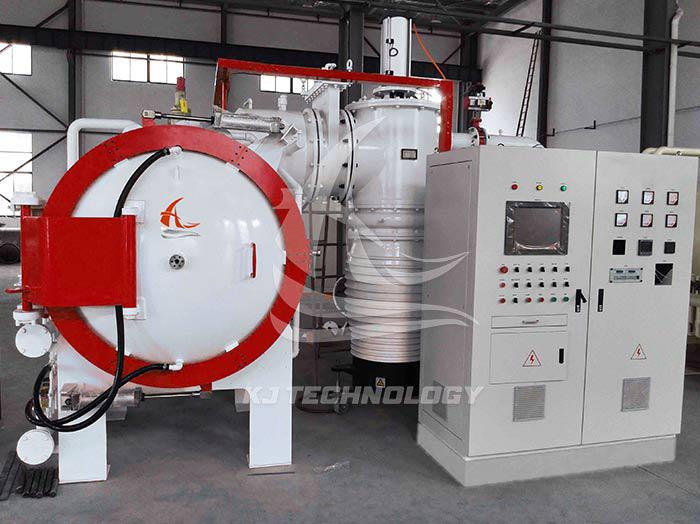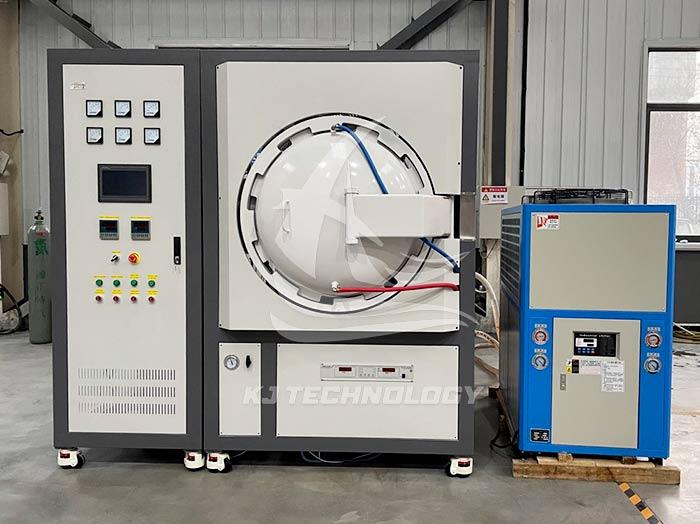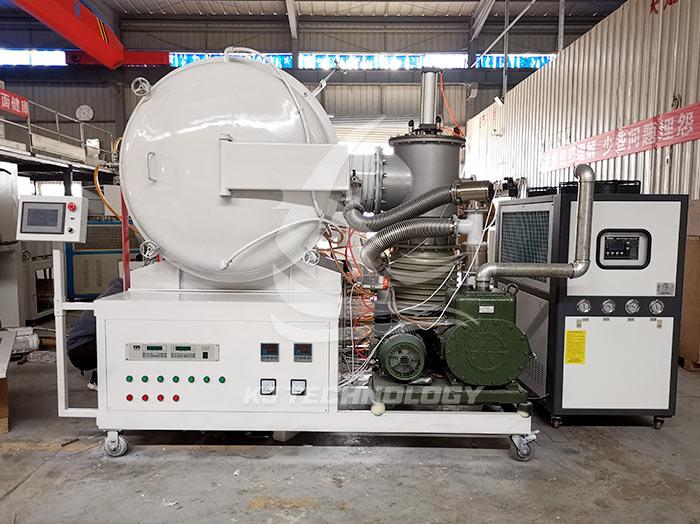Can gas be introduced during vacuum furnace annealing?
 10-10-2025 Author: KJ technology
10-10-2025 Author: KJ technology
During the annealing process in a vacuum furnace, gas can be introduced, which is called "inflation annealing" or "protective atmosphere annealing". Its core purpose is to optimize the annealing effect and protect the quality of the workpiece by controlling the atmosphere environment inside the furnace. Here are specific instructions:
1. The purpose of gas circulation
Prevent oxidation:
During the annealing process in a vacuum furnace, even if the vacuum degree is high, some materials (such as stainless steel and high-temperature alloys) may still undergo slight oxidation due to residual oxygen or impurities adsorbed on the surface of the material. Introducing inert gases such as argon and nitrogen can form a protective layer, isolating oxygen from contact with the workpiece and preventing oxidation.
Control carbon potential:
For materials that require carburizing or decarbonization treatment, introducing a specific proportion of hydrocarbon gases (such as methane, propane) and inert gas mixture can accurately control the carbon potential inside the furnace and achieve the carburizing or decarbonization effect of the material.
Promote degassing:
Some materials release adsorbed gases (such as hydrogen) during the annealing process. Introducing gas can create a gas flow, helping these gases to be expelled from the furnace faster and reducing porosity and defects inside the workpiece.
Improving surface quality:
Introducing gas can reduce the deposition of volatile substances on the surface of workpieces and improve surface smoothness, especially suitable for workpieces with high surface quality requirements such as optical components and precision parts.
2. Types and selection of gas supply
Inert gas:
Argon (Ar): chemically stable, does not react with most materials, and is suitable for annealing protection of most metal materials.
Nitrogen (N ₂): Low cost, but certain metals (such as titanium) may react with nitrogen at high temperatures and need to be selected based on material properties.
Reductive gas:
Hydrogen (H ₂): It has reducibility and can remove oxides on the surface of workpieces, but the concentration and furnace pressure need to be strictly controlled to prevent explosion risks.
Carbon monoxide (CO): Used in certain special annealing processes, but attention should be paid to toxicity issues.
Carbon potential control gas:
Methane (CH ₄), propane (C ∝ H ₈) and other hydrocarbons: used for carburizing treatment, they need to be mixed with inert gases.
3. Key points for gas circulation operation
Gas purity control:
The gas introduced must meet high purity standards (such as 99.99% or above) to avoid contamination of the workpiece by impurities.
Gas pipelines and valves need to be cleaned regularly to prevent impurities such as oil and moisture from entering the furnace.
Flow and pressure control:
The gas flow rate needs to be adjusted according to the furnace volume, number of workpieces, and annealing process requirements to ensure a uniform atmosphere inside the furnace.
The pressure inside the furnace should be maintained within an appropriate range to avoid excessive deformation of the furnace body or insufficient protection effect.
Ventilation timing and stages:
Heating stage: Usually, ventilation is started before reaching the annealing temperature to eliminate residual air in the furnace.
Insulation stage: Continuous ventilation to maintain a protective atmosphere and prevent oxidation of the workpiece.
Cooling stage: Determine whether to continue ventilation according to process requirements. Some processes require ventilation during the initial cooling stage to prevent re oxidation of the workpiece surface.
4. Precautions for gas circulation
Security risks:
When introducing flammable gases (such as hydrogen), it is necessary to strictly follow safety operating procedures to prevent leakage and explosion.
Excessive pressure inside the furnace may cause the furnace to rupture, and safety valves and pressure monitoring devices need to be installed.
Process compatibility:
Different materials have different requirements for the atmosphere, and suitable gas types and ventilation parameters need to be selected based on the characteristics of the materials.
Some materials, such as titanium alloys, are sensitive to hydrogen gas at high temperatures and should avoid using hydrogen gas or strictly control its concentration.
Device compatibility:
The vacuum furnace needs to have ventilation function, including gas inlet, flow control device, and pressure monitoring system.
Old style vacuum furnaces may need to be modified to achieve ventilation function, and the cost and benefits of the modification need to be evaluated.








